Local governments are excellent laboratories for experiments for delivering public services to citizens. Few cities have taken to this role of experimenting with artificial intelligence in service delivery more so than Dubai, one of the seven emirates that make up the United Arab Emirates and the second wealthiest after Abu Dhabi. The UAE has invested heavily in technology for improved government service delivery, and recently created the position of Minister of AI. While the government is supporting AI-based technology pilots and implementation throughout the UAE, Dubai is proving to be particularly adept at identifying opportunities to experiment and implement these artificial intelligence technologies.
As part of its rapid economic development, Dubai has created an environment to attract start-up companies and investment capital across a wide range of technological development. But perhaps the most ambitious aspect of this effort is Dubai’s embracing of AI as the UAE positions itself as a global center in this so-called “fourth industrial revolution.” In addition to tax credits to attract businesses, Dubai and the UAE are investing directly in multiple existing firms and start-ups. Furthermore, the nation is also investing in their own applied artificial intelligence experiments in the delivery of public services. From education, transportation, and other government services, artificial intelligence will change the way we govern and manage cities.
Education
The UAE plans to use AI to meet the educational needs in this region, which has become an increasingly pressing public policy issue. Recent studies in the UAE and across the region are predicting a shortage of teachers in the next four years. To address this shortage, AI teaching aides including teaching robots are slated to join multiple schools across Dubai. This approach facilitates student tutoring based on personalized curricula, leaving no child behind and no advanced child stalled while waiting for classmates to catch up. Robotic teaching assistants can sync with a school’s records to create profiles for each student.
Combined with predictive analytic tools and AI platforms, the robots will “know” the student’s academic strengths and weaknesses, and anticipate their needs to tailor work for that individual. At this stage, the robotic teachers are only a tool—there are no plans to do away with human teachers. With the use of AI teaching assistants, human teachers could have more students in one class while still ensuring that everyone was receiving adequate and tailored attention. Proponents argue that Dubai’s students will be better positioned to enter the technology-driven workforce of the future.
Transportation
Leaders in Dubai also intend to use AI to ease traffic congestion. Long commutes and traffic jams are not a new problem, but the rapid increase in the number of automobiles being purchased and put on the streets exacerbates Dubai’s traffic problems.
Ruler of Dubai Sheikh Mohammed bin Rashid Al Maktoum has also set a goal for 25 percent of the emirate’s cars to be autonomous by 2030. This strategic initiative would not reduce the amount of cars on the road, but it is likely to reduce the amount of vehicle collisions. Moreover, the switch to 25 percent driverless cars is estimated to generate $6 billion in savings and other economic impacts by reducing time spent in travel. Dubai planners are integrating the use of artificial intelligence with various means of autonomous transportation to build safer, smarter, and more efficient roadways.
Conventional forms of transportation are also receiving a facelift to compete with the technologies that Dubai is implementing. Notably, buses will soon be equipped with facial recognition technology to assess a bus driver’s capacity to preform essential job functions. The facial recognition cameras can determine if the bus drivers are fatigued, unfocused, or on their cell phones. Early results are indicating an 88 percent drop in exhaustion cases attributed to the new system. This technology can actively intercede to make recommendations to drivers to help them focus during their shift, and keeping drivers alert on monotonous drives could result in more efficient and safer communities.
Public Services
Artificial intelligence systems are already quickly becoming an effective intermediary between citizens and government services. Cities may soon integrate these systems into basic services that interact with citizens, such as 3-1-1 and its equivalents. In addition to education and transportation, Dubai is implementing artificial intelligence systems for delivering an array of other public services to their residents.
The Dubai Electricity and Water Authority (DEWA) implemented “Rammas” chatbots using a Google AI platform in their Customer Happiness Centers in January, 2017. DEWA designed the service to understand and respond to written questions in both Arabic and English. What makes Rammas special is its ability to learn and adapt based off the questions posed by a customer. The goal of the service is to increase customer knowledge and access to information as part of Dubai’s smart city goals. At of the end of January 2018, less than one year after Rammas was introduced, the system has responded to around 700,000 inquiries, leading to an 80 percent drop in physical department visits.
Dubai is emerging as a model of smart city and AI experimentation supported by government but in partnership with industry leading companies as well as investors in a range of start-up ventures. The UAE and Dubai are quick to identify and support those technologies that these groups are developing in the AI space. They are finding useful means of adapting them to government service needs in innovative ways that are beginning to yield lessons for other cities around the world.
The Brookings Institution is committed to quality, independence, and impact.
We are supported by a diverse array of funders. In line with our values and policies, each Brookings publication represents the sole views of its author(s).

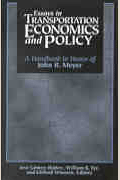
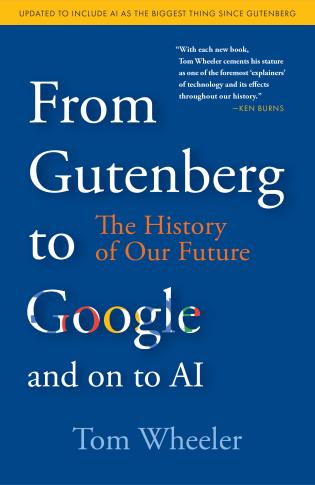
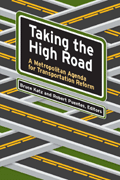
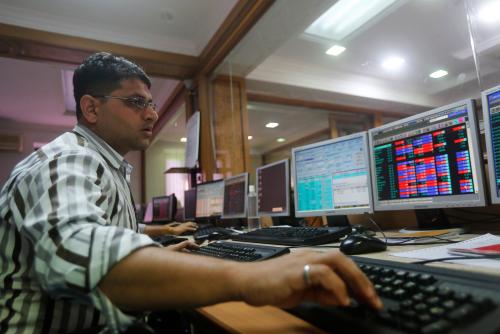
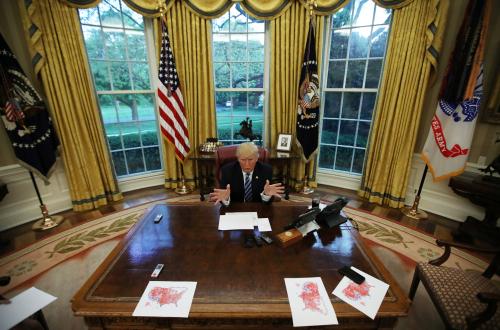
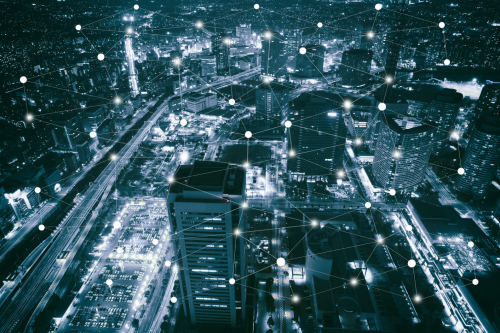
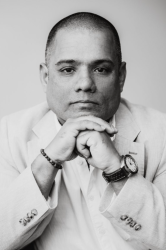



Commentary
Dubai offers lessons for using artificial intelligence in local government
September 28, 2018